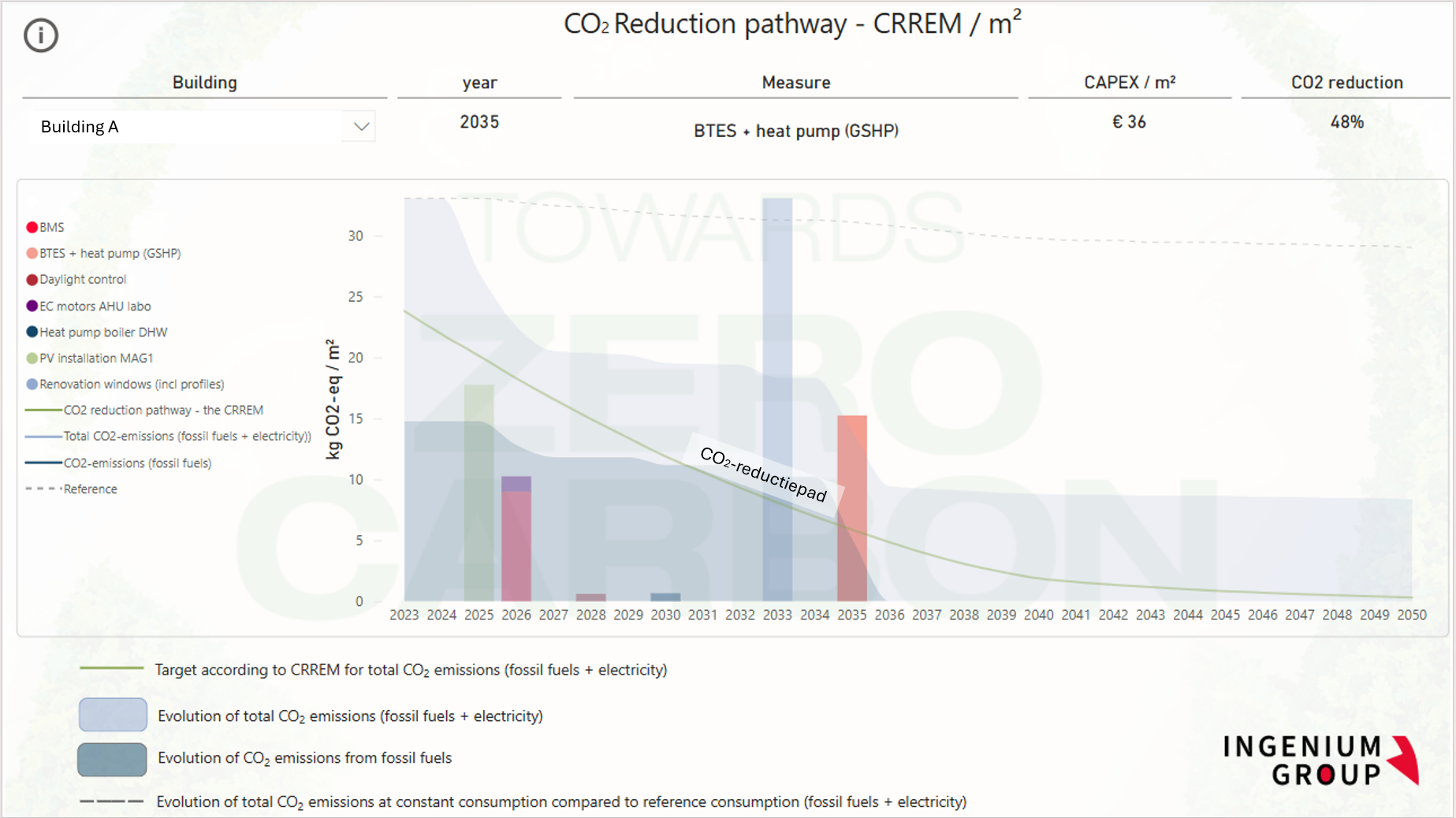
UZ Leuven, Gasthuisberg Campus on the road to a fossil-free campus

The university hospital campus of Gasthuisberg was built in the late 1970s and has since been heated by a very large central boiler room of 42 MW on natural gas. This boiler room is one of the largest boiler rooms for non-industrial purposes in our country. Via an internal heat network, at a temperature of approximately 130 °C, all buildings on the UZ Leuven campus and part of the buildings of KU Leuven are heated. Given the age of this boiler room, it was time for a boiler room renovation.
Ingenium assisted UZ Leuven in forming their vision of the future concerning this furnace. This future vision was necessary to determine the capacity of the future boiler room and the technologies to be used. Would the necessary boiler power increase or decrease? This was one of the important questions that needed answers.
Back in 2006, Ingenium and Deerns drew up a master plan to make heat and cold production to new and renovated buildings largely sustainable. This master plan was based, among other things, on clustering heat and cold production on the one hand and, on the other hand, filling the heat and cold demand as sustainably as possible with, among other things, heat from heat pumps based on heat recovery from the cooling installations, geothermal energy and CHP heat. All construction projects since 2006 were already using these established principles. However, the central boiler room still occupied an important place in these concepts. Due to changed framework conditions and a changed climate context, this vision was therefore in need of an important update.
During three workshops, ideas were exchanged between Ingenium's energy experts and UZ Leuven engineers. Among other things, a long list of possible heat production techniques was drawn up to see what sustainable and renewable alternatives there are for a boiler room in a hospital campus of this scale. After the conceptual development of several scenarios, the decision was made after approval by the management: this fossil fuel furnace will eventually be phased out.

New planned buildings will no longer connect to the fossil heat grid on the site. Through heat pump plants, each serving a large cluster of buildings, these buildings will be supplied with heat and cold produced entirely sustainably by heat pumps. These heat pumps will use as a heat source a combination of heat recovery from the cooling plants, geothermal energy and outside air.
For the existing, older buildings on the campus, UZ Leuven is also developing a renovation master plan with a major focus on thermally insulating the building envelope and applying heat recovery in the ventilation air. Finally, the established principles will also be applied to these renovated buildings. In this way, more and more buildings can gradually be disconnected from the fossil fuel site and the internal heat grid on the site and gradually switch to sustainable heat pump technology.

Want to know more about this project? Contact Joris Dedecker at 050 40 45 30 or joris.dedecker@ingenium.be.
Downloads
Related news items

.png)
GRO 2025, the Belgian reference for sustainable buildings is a reality

